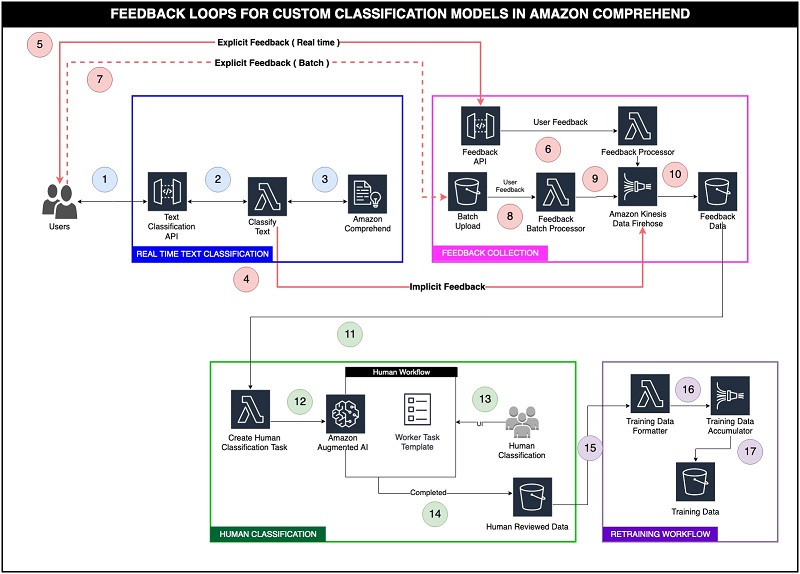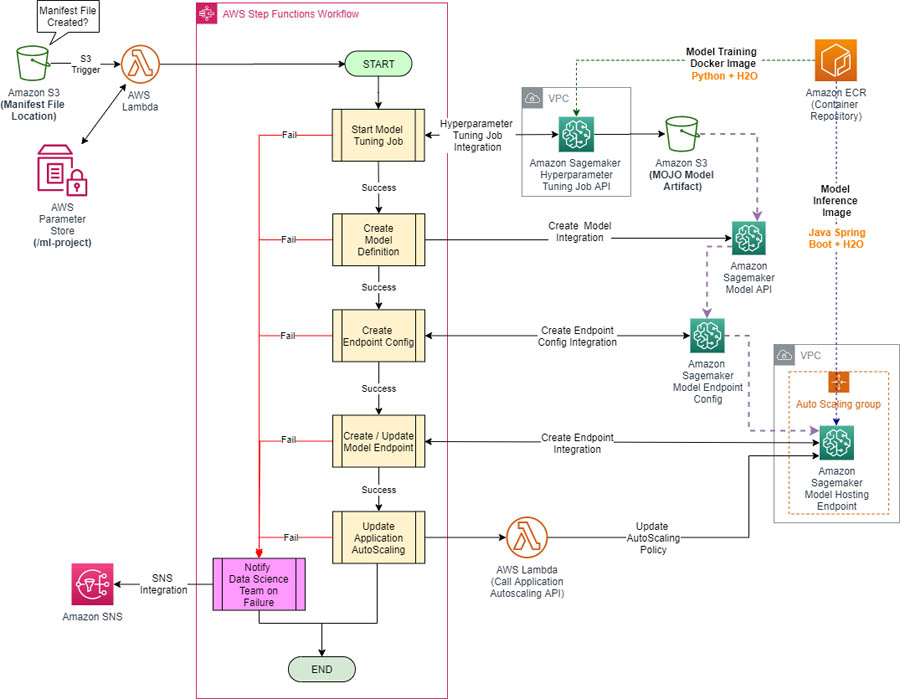AWS Machine Learning Blog
Category: Application Services
Automate continuous model improvement with Amazon Rekognition Custom Labels and Amazon A2I: Part 1
If you need to integrate image analysis into your business process to detect objects or scenes unique to your business domain, you need to build your own custom machine learning (ML) model. Building a custom model requires advanced ML expertise and can be a technical challenge if you have limited ML knowledge. Because model performance […]
ML model explainability with Amazon SageMaker Clarify and the SKLearn pre-built container
Amazon SageMaker Clarify is a new machine learning (ML) feature that enables ML developers and data scientists to detect possible bias in their data and ML models and explain model predictions. It’s part of Amazon SageMaker, an end-to-end platform to build, train, and deploy your ML models. Clarify was made available at AWS re:Invent 2020. […]
Creating an end-to-end application for orchestrating custom deep learning HPO, training, and inference using AWS Step Functions
Amazon SageMaker hyperparameter tuning provides a built-in solution for scalable training and hyperparameter optimization (HPO). However, for some applications (such as those with a preference of different HPO libraries or customized HPO features), we need custom machine learning (ML) solutions that allow retraining and HPO. This post offers a step-by-step guide to build a custom deep […]
Build a CI/CD pipeline for deploying custom machine learning models using AWS services
Amazon SageMaker is a fully managed service that provides every developer and data scientist with the ability to build, train, and deploy machine learning (ML) models quickly. SageMaker removes the heavy lifting from each step of the ML process to make it easier to develop high-quality ML artifacts. AWS Serverless Application Model (AWS SAM) is […]
Rust detection using machine learning on AWS
Visual inspection of industrial environments is a common requirement across heavy industries, such as transportation, construction, and shipbuilding, and typically requires qualified experts to perform the inspection. Inspection locations can often be remote or in adverse environments that put humans at risk, such as bridges, skyscrapers, and offshore oil rigs. Many of these industries deal […]
Active learning workflow for Amazon Comprehend custom classification models – Part 2
Update Sep 2021: Amazon Comprehend has launched a suite of features for Comprehend Custom to enable continuous model improvements by giving developers the ability to version custom models, new training options for custom entity recognition models that reduce data preprocessing, ability to provide specific test sets during training, and live migration to new model endpoints. Refer to […]
Automating complex deep learning model training using Amazon SageMaker Debugger and AWS Step Functions
Amazon SageMaker Debugger can monitor ML model parameters, metrics, and computation resources as the model optimization is in progress. You can use it to identify issues during training, gain insights, and take actions like stopping the training or sending notifications through built-in or custom actions. Debugger is particularly useful in training challenging deep learning model […]
Automating an Amazon Personalize solution using the AWS Step Functions Data Science SDK
Machine learning (ML)-based recommender systems aren’t a new concept across organizations such as retail, media and entertainment, and education, but developing such a system can be a resource-intensive task—from data labelling, training and inference, to scaling. You also need to apply continuous integration, continuous deployment, and continuous training to your ML model, or MLOps. The […]
Training and serving H2O models using Amazon SageMaker
Model training and serving steps are two essential pieces of a successful end-to-end machine learning (ML) pipeline. These two steps often require different software and hardware setups to provide the best mix for a production environment. Model training is optimized for a low-cost, feasible total run duration, scientific flexibility, and model interpretability objectives, whereas model […]
Building machine learning workflows with Amazon SageMaker Processing jobs and AWS Step Functions
Machine learning (ML) workflows orchestrate and automate sequences of ML tasks, including data collection, training, testing, evaluating an ML model, and deploying the models for inference. AWS Step Functions automates and orchestrates Amazon SageMaker-related tasks in an end-to-end workflow. The AWS Step Functions Data Science Software Development Kit (SDK) is an open-source library that allows […]







